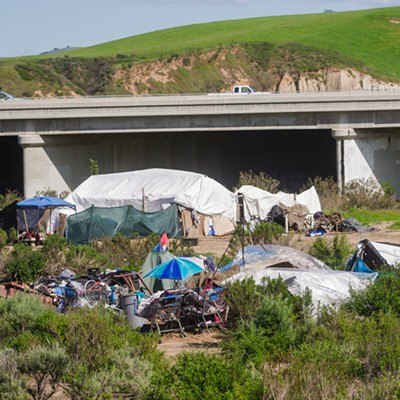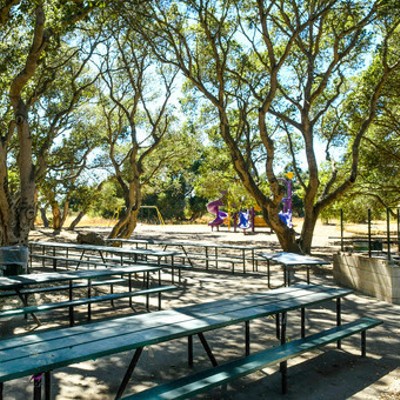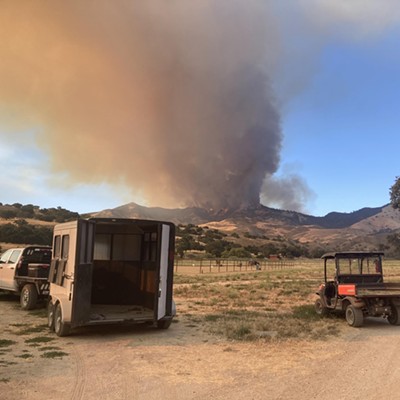It started in first grade.
Rachel* came home from school, stunned. That day, she’d seen a boy pin a female student against a wall, hitting her. It was scary. And when Rachel described the scene, concerned, her mother could hardly believe it.
“In first grade,” her mom said, “kids are already trying to be mean?”
Eventually, Rachel became a target—first by this boy, who chased her, and pulled her hair, and called her names. Then eventually other students joined in, boys and girls alike, pushing her off playground equipment, hitting her with lunch boxes, dragging her across the pavement, and grabbing her by the neck.
“All these kids were bigger,” her mom recalled. “They would pick on her in class. They would follow her at recess, yell in her ear, ‘You’re ugly, you’re stupid,’ all day long. Every recess. Lunch seemed to be the worst.”
Rachel is in third grade now, as is her twin sister. The bullying continues.
The twins’ mom, who requested the Sun omit her name, has gone up the ladder of administrators at Orcutt Union School District, trying to safeguard her daughters from the bullies who target them. But she’s had little success. Administrators now stand near Rachel and her sister during recess to make sure no one bothers them—meanwhile, the girls still claim going to school is the hardest thing in their life, and they fake stomachaches to try and get out of it.
“They don’t want to go,” their mom said, “because it’s a nightmare.”
She remembered a conversation she had with Debbie Blow, the district superintendent, about her daughters’ situation. Blow said that bullying rarely starts before fourth grade, so the corrective actions specified in the district’s bullying policy may not apply in the third grade girls’ case.
Their mom was bewildered.
“It’s your job to make sure the kids have a safe education and feel safe at school—not just feel, but actually be safe at school,” she said of the administration. “You have to get parents involved also.”
Making and breaking a bully
Schoolyard bullying is a complex issue. Kids who exhibit bully behavior often come from stressful home lives, which could have left them with feelings of insecurity or a disproportionate need for control. But those emotions may not manifest until the children are on campus, leaving school administrators with a tough predicament: How do you fix a bullying situation at school, when the root of the problem is likely at home?
“It’s not easy,” Blow told the Sun. “If we have a student that is reporting [bullying], the biggest thing is giving them the skills to stand up for themselves, giving them the skills to report, having counseling support. Children that have been bullied need that support. They need to know they’re OK, and they need to learn those survival skills.”
And she stands by her opinion that bullying doesn’t usually start until fourth grade.
“It’s more like teasing,” Blow said of the younger students. “Not that teasing’s OK, but I think it’s more that they’re teasing and they don’t really understand, versus more of an intentional bullying at an older grade.”
44.2 percent of students reported name-calling
43.3 percent reported teasing
36.3 percent reported spreading rumors or lies
32.4 percent reported pushing or shoving
29.2 percent reported hitting, slapping, or kicking
28.5 percent reported being left out
27.4 percent reported being threatened
27.3 percent reported stolen belongings
23.7 percent reported sexual comments or gestures
Source: 2007 study via www.stopbullying.gov/news/media/facts/#listing
She said that while it’s possible for a younger child to demonstrate severe or pervasive bullying tendencies, it’s uncommon—and when it does happen, it’s usually because the child doesn’t understand or appreciate his or her own emotions yet. Blow prefers to approach those situations with counseling rather than punishment, she said.
“What I struggle with the most is putting that label of ‘a bully’ on a 6-year-old,” she said. “I think if the 6-year-old is exhibiting those traits, they’ve seen that behavior somewhere, and I don’t think they are intentionally going out to be a bully.”
Thesa Roepke, early childhood studies coordinator at Allan Hancock College, agreed with Blow on that count. She said bully behavior usually starts after a child has observed cruel treatment between family members, or perhaps was the subject of such treatment at home.
“Then what happens is that causes a bunch of anxiety and things to transpire,” Roepke told the Sun. “You think, ‘That’s the way males treat females,’ or, ‘I have to have power over somebody.’”
The earlier the mistreatment starts and the longer it continues, the more likely it is for an involved child to become a bully, she said.
To that end, Roepke disagreed with Blow’s fourth grade threshold, saying bullying profiles can start very early on in childhood, even in preschool. But because children don’t start developing empathy until a few years later, more consistent bullying behavior doesn’t become clear until second or third grade.
“Part of the natural progression of child development is you learn, ‘My actions have a counteraction on somebody else, and I feel bad when somebody else feels bad or I’ve hurt somebody,’” Roepke said. “That whole process doesn’t come into play, where they really have an understanding of how their actions affect others, until they’re 7 or 8 years old.”
Bullying is most common between the ages of 6 and 12, Roepke said. And by that point, the behavior can become cyclical, because any response to it—even a negative one—is in some sense an encouraging reward.
“If a child’s not receiving the type of attention that they desire outside of the school environment, then when they’re in the school environment they’re seeking that out,” Roepke said. “If I bully somebody, I don’t just get attention from the adult, whether it’s positive or negative. I get attention from all the peers watching, so it’s highly motivating.”
A policy matter
Even though bullying usually doesn’t start in school, it almost always ends up there—so the responsibility of dealing with it falls into administrators’ laps.
California law actually requires public school districts to develop and implement policies that prohibit bullying. Each policy must include definitions of bullying, procedures for reporting it, procedures for investigation and response, maintenance of written records, consequences and sanctions, and procedures for referring involved parties to mental health services.
The policies must also include rules pertaining to cyber bullying, which Blow said is an increasing problem among even the younger students, and it’s an issue the district faces every year.
Blow said the district is expanding its attempts to address bullying. A few weeks ago, she hired three certified counselors to work in the elementary and junior high schools. By next school year, she hopes to implement a “positive behavior intervention and support” program to help instruct students on how to stand up for each other in bullying situations. School staff and faculty receive annual online training in how to approach and prevent bullying, as do parents.
The crackdown on bullying through district policies over the past decade has significantly helped the problem, Blow said, though it hasn’t eradicated it.
Roepke agreed. She teaches a child development class at Hancock in which her students must interview school-aged children about how they view bullies. When she began teaching 15 years ago, students would describe bullies as physically intimidating and mean. Now, their responses are different.
“Now, I’m hearing things like, ‘Oh, they could be just like you or me,’ or, ‘They bully because they’re sad or because they don’t feel good about themselves,’” Roepke said. “I think we’re making positive progress on reducing the amount of bullying.”
The anti-bullying rules at Orcutt Union School District say the superintendent “shall notify the parents/guardians of the victims and perpetrators and may contact law enforcement” if the behavior is severe and ongoing.
But Blow said those extreme cases don’t happen often, especially in younger grades.
“I know bullying exists,” she said. “I know it’s something we need to address. I also know that sometimes people are quick to put that label on something that may or not be bullying.”
She said she defines bullying as “ongoing and pervasive,” and isolated incidents of name-calling, for example, don’t fall under that umbrella.
“I’m not saying name-calling is OK,” she said. “But name-calling on an occasion in and of itself in an isolated situation is not what I would define as bullying. If it’s name-calling, and threatening, and ongoing over a period of weeks, that’s bullying.”
In the long run
Bullying hasn’t always been taken seriously. Bully-like characters pop up in just about every sitcom, coming-of-age film, and kids’ book series out there. Usually they’re just nuisances, and sometimes even comical ones. Rarely do they cause any serious or long-lasting ramifications to the main characters.
But that’s not reality.
Roepke pointed to a study released in June 2015 that observed the long-term effects of bullying in childhood, and the results were gravely serious and far from comical. Kids who were subject to peer bullying showed increased risk for anxiety, depression, self-harm, and suicidality, according to the study, regardless of whether adults had mistreated them earlier in life.
The behavior even impacts people’s physical health, Roepke said. Being bullied correlates with stomach problems and digestive issues, as well as lowered immune systems due to prolonged stress.
It can also compromise children’s ability to maintain healthy relationships later in life.
“Children who are bullied have difficulty in moving forward with having productive relationships with others,” Roepke said. “It affects their ability to make friends. A lot of them tend to be either introverted—they withdraw—or they extrovert. So eventually they can also have some aggression associated with being bullied.”
The behavior can even move into people’s professional lives, she said, and manifest in workplace bullying between coworkers.
So, it’s a big deal. And according to Roepke, there’s only one way to put an end to it.
“The way we can stop bullying,” she said, “is by teaching tolerance and acceptance in early childhood.”
When kids reach 7 or 8 years old, they’ve already developed expectations for peer relationships, Roepke said. If parents and educators can teach tolerance and acceptance before that point, and try to help children honor each other’s differences, then they’ll be more likely to advocate for each other in bullying situations.
“They’re going to stand up for someone and say, ‘Wait a minute, that’s not OK,’ instead of being afraid to do that,” Roepke said. “And there’s more empathy rolled up into that.”
This would also require intervention and emotional support for dysfunctional families, she added.
Alternatives for now
Even if experts have found the solution to bullying, the problem is still out there. Bullying still persists on school campuses. Rachel still dreads showing up to school. And for kids who just can’t take it anymore, parents might explore alternative options: changing schools, homeschooling, or even online education.
18.5 percent of students report bullying on school property
22.2 percent of female students report bullying on school property
14.2 percent of male students report bullying on school property
Source: nccd.cdc.gov/YouthOnline/App/Results.aspx?LID=CA
Amy Wellard has taught for California Virtual Academies, a network of online public schools, for 10 years. She works with around 30 families every year, and each year, she said she has one or two students who join the program to escape bullies. Last year she had one such student from Lompoc and another from Oceano.
Wellard, who has worked for public school districts in Orcutt and Santa Maria, told the Sun she has “nothing but respect for the local public schools.”
“I think sometimes public schools do their best, but if you have a student and you’re not getting support from the parents with regard to the bullying, the school can only do so much,” she said. “Their hands are tied.”
And in Wellard’s online classroom, where she can monitor all the interactions between her students, it’s much easier to take an effective stance against bullying. So in situations where students being bullied reach the end of their rope and their schools aren’t able to make them feel safe, online schooling is an option.
“It’s an alternative to going to school feeling sick to your stomach every day,” Wellard said.
Rachel’s mom wants to keep her daughters in school where they are. It’s where their older siblings went, and where their parents went.
But, the twins’ mom said, it’s heartbreaking to know her children fear going to school because of how their peers treat them.
“People have breaking points,” she said. “Even at 8-and-a-half.”
*Rachel’s name has been changed to protect her identity.
Staff Writer Brenna Swanston can be reached at [email protected].










